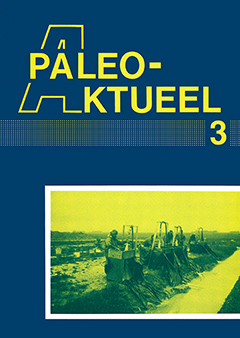MAMMOETVONDSTEN UIT ORVELTE, GEMEENTE WESTERBORK (DR.)
Samenvatting
Digging a shaft for the pipeline network of the Nederlandse Gasunie, the contractor, Nacap bv, discovered a mammoth tusk and bones in an old stream valley, filled with peat and gyttja layers. During a rescue excavation more bones and samples were retrieved. Several scientists visited the site and made brief studies of different aspects. The stream valley, dating from the Pleniglacial period, was cut off from a farger system during the Moershoofd interstadial and rapidy filled with peat and gyttja deposits. This is clearly indicated by the 14C dates of two levels and a bone, which point to around 45.000 BP.The mammal bones were identified as belonging to three mammoth individuals and a woolly rhinoceros. Botanical samples provided evidence for the reconstruction of the vegetation and confirmed the geological history of the valley. A preliminary pollen diagram is being prepared for about three metres of claygyttja deposits and a sample from near a mammoth jaw has been examined for macrofossils. The environment was treeless, scrub of Betula nana (dwarf birch) growing in a sheltered valley with snow cover. The macrofossil record features plant species even nowadays occurring in the area or elsewhere in the northern Netherlands nowadays. Marsh vegetation, water plants and algae suggest the presence of seepage water rich in minerals; the sandy upland offered poorer conditions.

